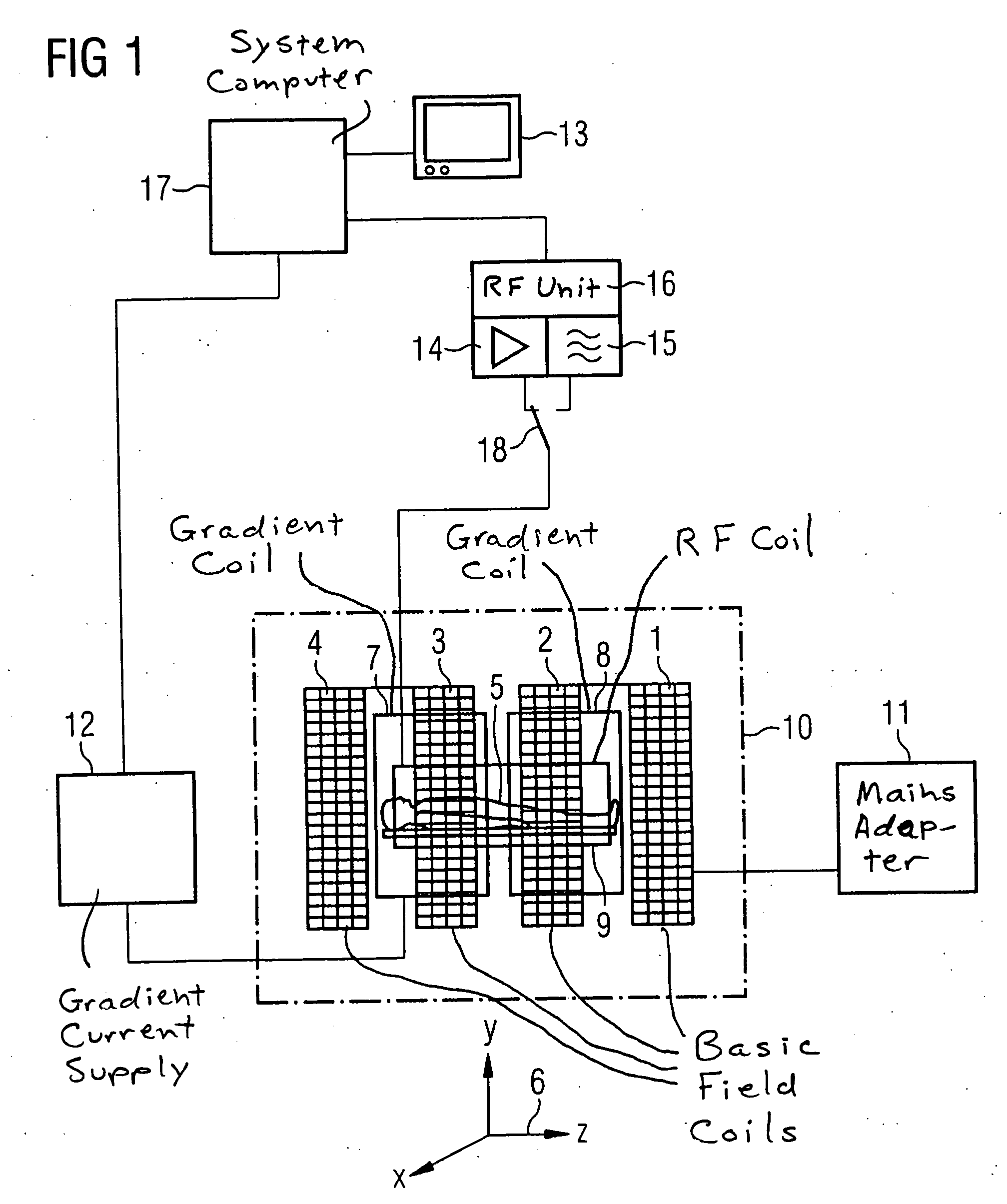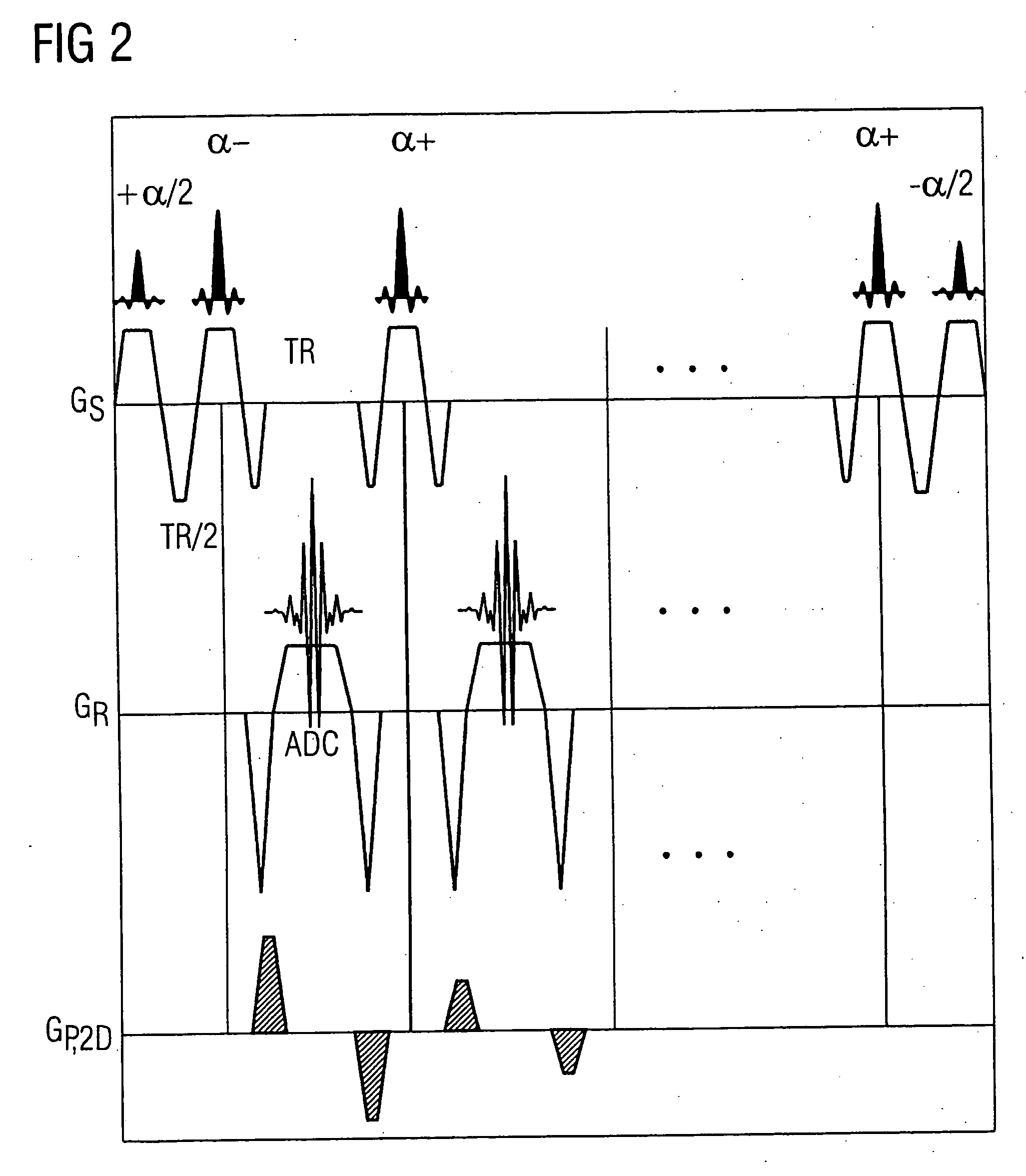Magnetic resonance imaging method and apparatus with application of the truefisp sequence and sequential acquisition of the MR images of multiple slices of a measurement subject
a magnetic resonance imaging and sequence technology, applied in the field of magnetic resonance imaging methods, can solve the problems of destroying coherent transverse magnetization with a spoiler pulse, unable to use the transient range for data acquisition without further measures, and reducing image artifacts such as ghosting
- Summary
- Abstract
- Description
- Claims
- Application Information
AI Technical Summary
Benefits of technology
Problems solved by technology
Method used
Image
Examples
Embodiment Construction
[0054] A typical magnetic resonance tomography apparatus for the generation of slice images of an examination subject is shown in FIG. 1, which also be used for the inventive method. It has coils (1, 2, 3, 4) that generate a magnetic basic field B0. The measurement subject to be examined, for example the body of a patient, is located in this basic field. Moreover, the magnetic resonance tomography apparatus has gradient coils that serve for generation of independent magnetic field gradients perpendicular to one another in the directions x, y and z. For reasons of clarity, only the gradient coils 7 and 8 are drawn in FIG. 1, which gradient coils 7 and 8 serve for generation of the gradients GR together with a pair of oppositely-situated similar gradient coils. The similar gradient coils (not drawn) for GP lie parallel to the body 5 as well as above and below the body. The coils necessary for the gradient field GS are arranged transverse to the longitudinal axis of the body at the hea...
PUM
 Login to View More
Login to View More Abstract
Description
Claims
Application Information
 Login to View More
Login to View More - R&D
- Intellectual Property
- Life Sciences
- Materials
- Tech Scout
- Unparalleled Data Quality
- Higher Quality Content
- 60% Fewer Hallucinations
Browse by: Latest US Patents, China's latest patents, Technical Efficacy Thesaurus, Application Domain, Technology Topic, Popular Technical Reports.
© 2025 PatSnap. All rights reserved.Legal|Privacy policy|Modern Slavery Act Transparency Statement|Sitemap|About US| Contact US: help@patsnap.com



